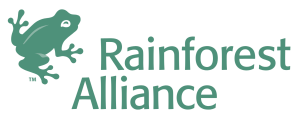
The ResourceSpace team has been exceptionally good at support services. They make everything so convenient and efficient with the cutting edge technology. Kudos to the team.
Blog
3rd January 2020

Your corporate identity is all the visual elements you use to tell your audience who you are.
Managing your corporate identity effectively creates clarity and consistency - neglect it and you risk devaluing your brand and confusing prospective buyers.
Various elements make up your corporate identity.
Think logos, adverts, staff uniform, signage, social media pages, tone of voice, and fonts. As your business grows, your corporate identity will start to include more and more branding elements. Having systems in place that make sure everything is in sync is crucial for a recognisable and successful corporate identity.
It takes time and effort to make sure your brand stays recognisable. With the right tools and processes in place, your company's carefully honed corporate identity will be protected. Here's how you can achieve this:
Getting your brand guidelines in place is one of the first things you should do when launching a business. Outline all the essential elements that make up your brand's image and put them into a shareable document for your entire team to refer to. This will make sure everyone's consistent right from the start.
Sticking to these guidelines will help make your business memorable. They'll distinguish your business from competitors and establish loyalty with clients.
Apart from ensuring that your messaging is always up to date with the current brand guidelines, you should also address the legal implications that come with trading under your chosen business name and how you protect its identity. If ignored, these could cause problems for your corporate identity.
Fortunately, there are numerous ways to protect your brand and any new ideas you may have:
Depending on the nature of your product or service, there will be specific legal avenues you should pursue in order to protect your legal identity and intellectual property. It's important to claim your domain name and social media handles as soon as you can too.
"A brand for a company is like a reputation for a person. You earn reputation by trying to do hard things well."
- Jeff Bezos
Thanks to social media it's easier than ever to monitor how people feel about your business and where your branding assets are being used.
There are plenty of free online tools like Google Alerts, Social Mention and TweetReach that can help you keep an eye on what's being said about your business These give you the option to be proactive in your responses and take action when necessary.
As your business expands, you'll have more and more digital assets that represent your brand. You'll also have more staff handling your information.
Your brand educates your customer about what your business does. If there are inconsistencies in the messages you send out your branded assets are likely to have less impact. Furthermore, your competition will almost certainly try to take advantage of any shortfalls in your corporate identity management.
One of the first steps to ensuring your brand guidelines are implemented is to make use of a digital asset management (DAM) system. This means that as more content and assets are created for your brand, you have a way to organise and store updated versions of everything that gets used by your employees, customers and third-parties. Instead of wasting time manually giving access to individuals, you can automatically set the parameters for how much access you'd like to grant a user in terms of editing and sharing.
Once you have your DAM in place, you're in a better position to optimise your branding and make your advertising and marketing activities much more streamlined.
ResourceSpace will help you build a digital asset library that directly serves the needs of your business in a way that positions you for increased productivity and growth. If you'd like to learn more about what our customizable DAM can do for your organisation or trial our software for free, just click here.
#BrandManagement
#BrandGuidelines
#BrandConsistency
#Rebranding
#LogoDesign
#Copyright